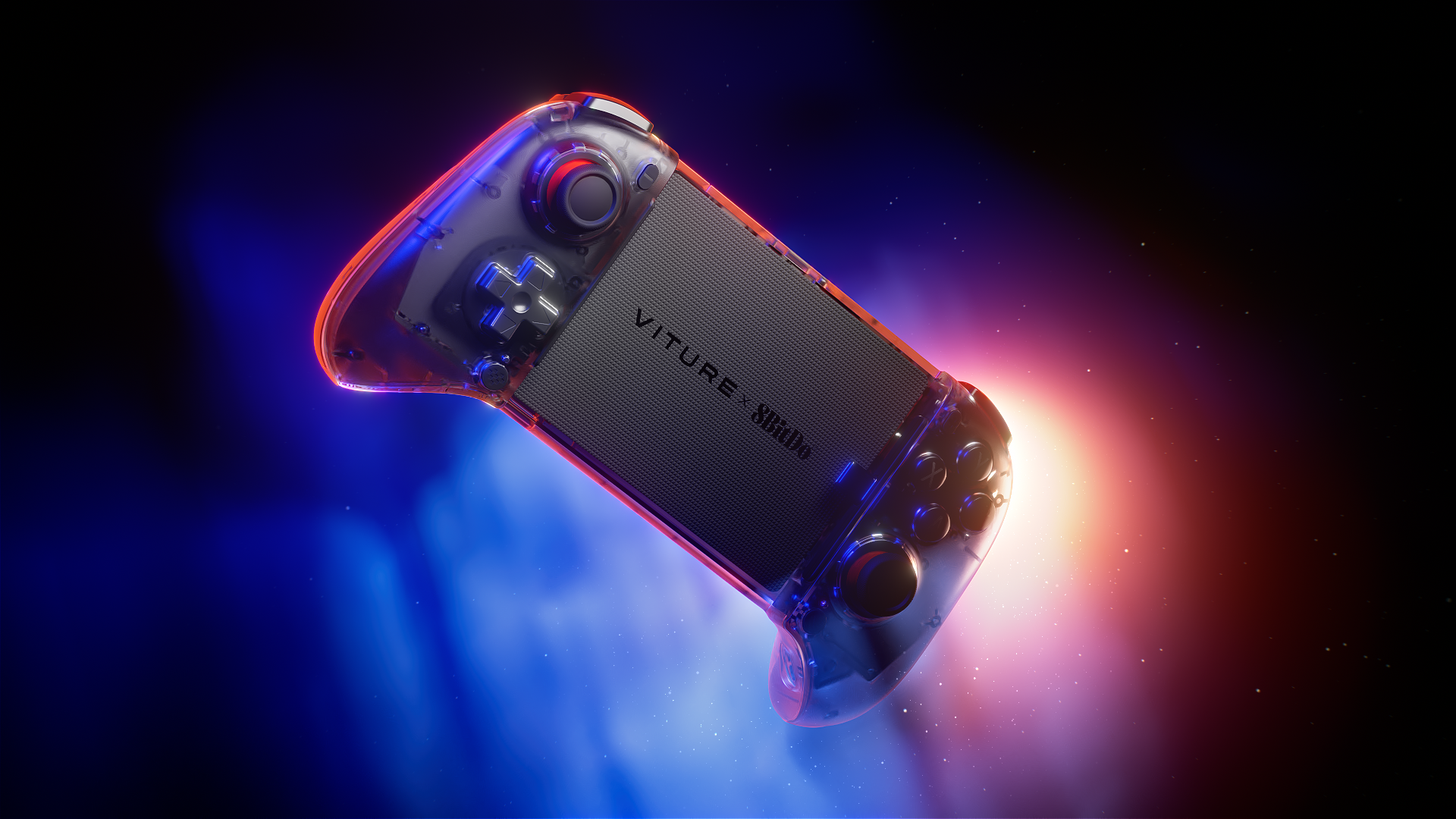Best handheld gaming devices 2025
Here are the best gaming handheld systems after rigorous testing

1. The list in brief
2. Best overall
3. Best for Steam users
4. Best Windows 11
5. Best 2K resolution
6. My experience with handheld gaming
7. Why trust Laptop Mag
The best handheld gaming consoles aren't just for those who want to play their favorite games without spending a fortune on the most expensive hardware in the market. It's for people who've entered an advanced societal consciousness. If you're anything like me, you've found yourself kneeling at the throne of handheld gaming and your allegiance is unwavering.
Hyperbole aside, handheld gaming is my latest obsession. I've been addicted to the Asus ROG Ally ever since I got my hands on it, and I've come to realize my one true purpose in this world is to spread gospel of this technology. The ability to play the hundreds of Steam, Xbox Game Pass, and Epic titles in my backlog, alongside emulating childhood classics, all with a little device in my hands, is phenomenal.
But there's more to this beautiful technology than all of the convenience of having Windows on a handheld gaming device. Whether it's through SteamOS on Steam Deck, Nintendo Switch's very own console ecosystem, or PlayStation Portal allowing you to play your favorite PlayStation titles on the go, there's so much to love here.
The Quick List
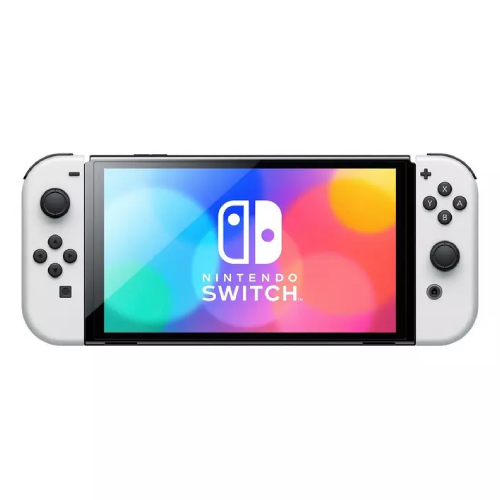
Best Overall
The Nintendo Switch is undeniably revolutionary and you cannot beat its catalogue of legendary exclusive titles. Whether it's docked, in your hands, or in tabletop mode, it's excellent for solo play, multiplayer shenanigans, and fun with the family.
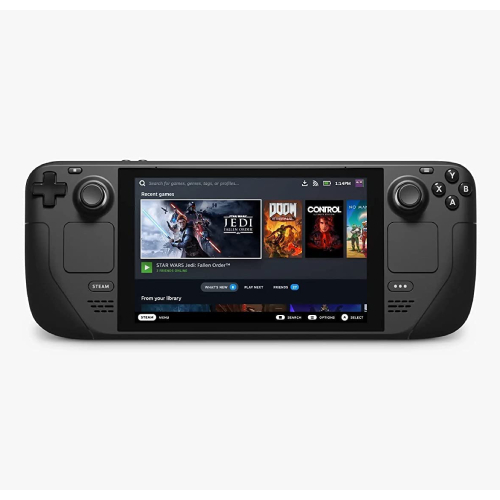
Best for Steam users
The Steam Deck took our expectations to next levels, solidifying itself as the number one choice for any and all Steam users. If you’re one of those people with a backlog of hundreds of Steam games, this is the ultimate tool to crush them all.
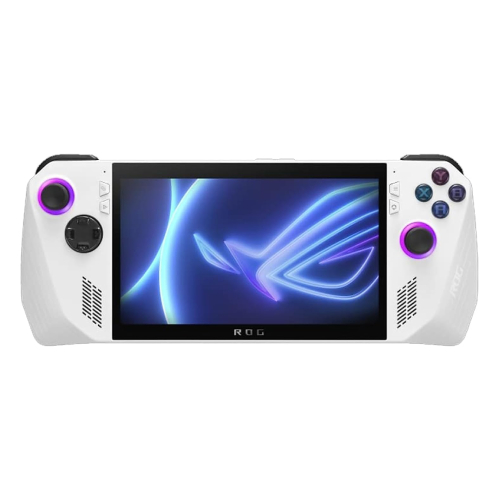
Best Windows 11
The Asus ROG Ally is the best handheld gaming device running Windows 11, as beyond its powers AMD Ryzen Z1 Extreme processor, a comfortable ergonomic grip and convenient Armoury Crate app make it feel snappy and powerful all at once.
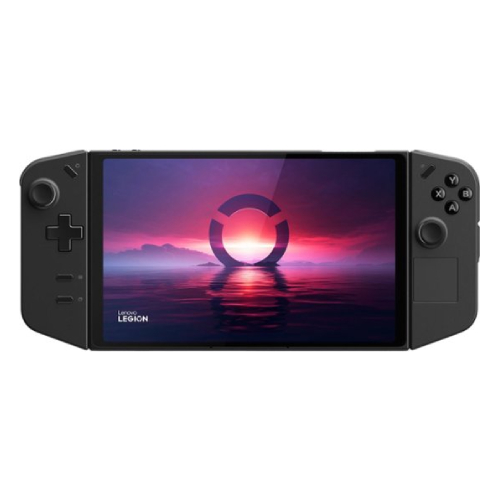
Best 2K resolution
The Lenovo Legion Go is ideal for those with premium tastes, built with an astounding 8.8-inch, 2,560 x 1,600-pixel IPS panel, it is the biggest and heaviest device on this list, ideal for people who prefer their handhelds be larger than life.
Best Overall
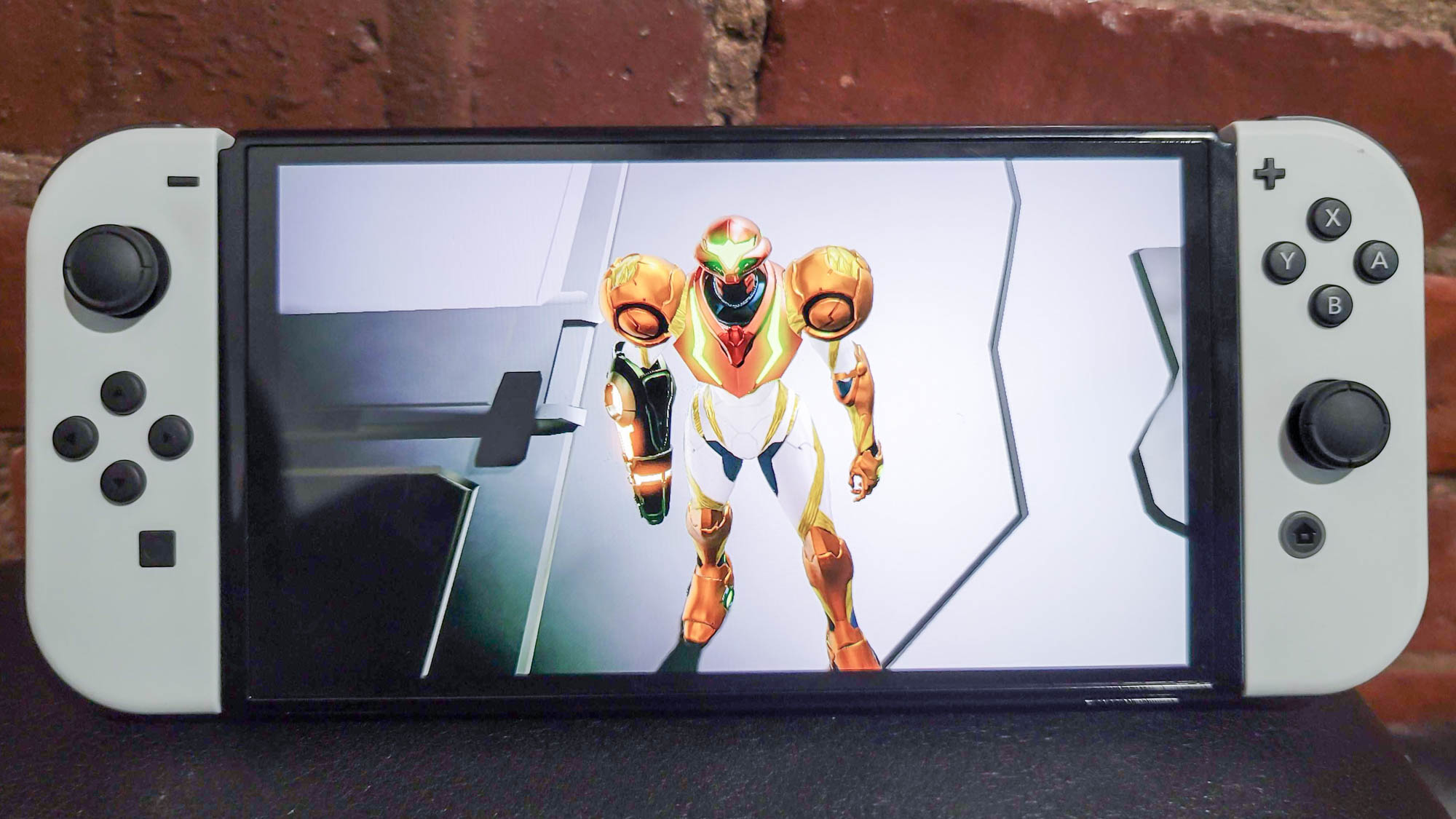
1. Nintendo Switch OLED
Specifications
Reasons to buy
Reasons to avoid
It's no surprise than the Nintendo Switch would be the best handheld console on our list, and lets be frank, it's unlikely I need to sell you on its greatest features. If you're remotely involved in the world of gaming, you already know what makes this thing so special. Solidifying itself as the first of its kind, it features detachable Joy Cons, a built-in kickstand at the back, and a dock which easily allows you to swap between handheld, tabletop, and docked mode at the snap of a finger.
The Nintendo Switch also benefits from being the lightest, thinnest, and smallest on this list. While that may not appeal to everyone, the ease of bringing it on the go and packing a device that's less-than-a-pound (.88 pounds with Joy Cons) but still feels sturdy is hard to deny. While it doesn't have a complex, ergonomic design (it's practically just a flat tablet), its lightness helps a lot in the world of comfort.
There have been many iterations on the Nintendo Switch until now, and there's even promises of a successor on the way. But regardless of whether you choose to buy a Nintendo Switch OLED, a Nintendo Switch Lite, or a base Nintendo Switch, these consoles are great for anyone looking to play the latest and greatest Nintendo exclusives.
However, it's important to keep in mind that the Switch 2 (or whatever Nintendo plans to call it) is likely coming out next year or the year after. Eurogamer reported that Nintendo held a demonstration of the unnamed console behind closed doors, meaning we could see it launch sooner than later.
Purchasing a Switch now might be a little too late, especially since it could become redundant in a year or two. Our biggest worry revolves around backwards compatibility, as there are tons of Switch exclusives that could be trapped on the console if Nintendo doesn't include the feature. If this ends up being true, the original Switch might be sold at a discount until the company gets rid of its stock once the successor is announced. This would be the ideal time to purchase a Switch.
But if you do decide you want the console now and nothing will stop you from getting your hands on it, we recommend the Nintendo Switch OLED thanks to its stunning display.
See our full Nintendo Switch OLED review.
Best for Steam users

2. Steam Deck OLED
Specifications
Reasons to buy
Reasons to avoid
The Steam Deck is the first PC-adjacent handheld gaming system that allowed users to get lost in their Steam library on the go. While it's not a Windows PC by any means, SteamOS is built upon Linux, which means users have found ways to do things like get emulators working through EmuDeck.
Regardless, the Steam Deck is ideal for anyone exclusively looking to get lost into their Steam library. This is a device that's perfect for people who already own tons of games on Steam and want a more convenient way to enjoy that content. We wouldn't necessarily recommend it to folks who don't have a Steam account, unless you're willing to begin a whole new library from scratch.
While our reviewer, Jason England, complimented its ergonomics that "slips into your hand's grip with ease," he also pointed out that its heaviness (1.4-1.5 pounds) gave him wrist ache after long gaming sessions.
The Steam Deck LCD model has been heavily discounted due to the launch of the OLED version. However, we haven't reviewed this specific model just yet. You can get the Steam Deck OLED starting at $549, and while its most notable upgrade involves its jump from LCD to OLED, it also goes from 60Hz to 90Hz refresh rate, 7.0 to 7.4-inch screen size, and a 40Whr to 50Whr battery. The lowest cost model has 512GB of storage space and a 7.6-inch, 1,280 x 8,00 OLED display.
If OLED doesn't appeal to you, we recommend one of the 7-inch 1,280 x 800-pixel LCD models. While the cheapest is 64GB for $349, that's far too little space for most people, so we recommend the 256GB for $399. If that's still too little, the 512GB model is $449 right now. Steam is only selling these until supplies last, as the OLED models are set to become the new base skew, so if you want one, now's the best time to grab it.
See our full Steam Deck review.
Best Windows 11
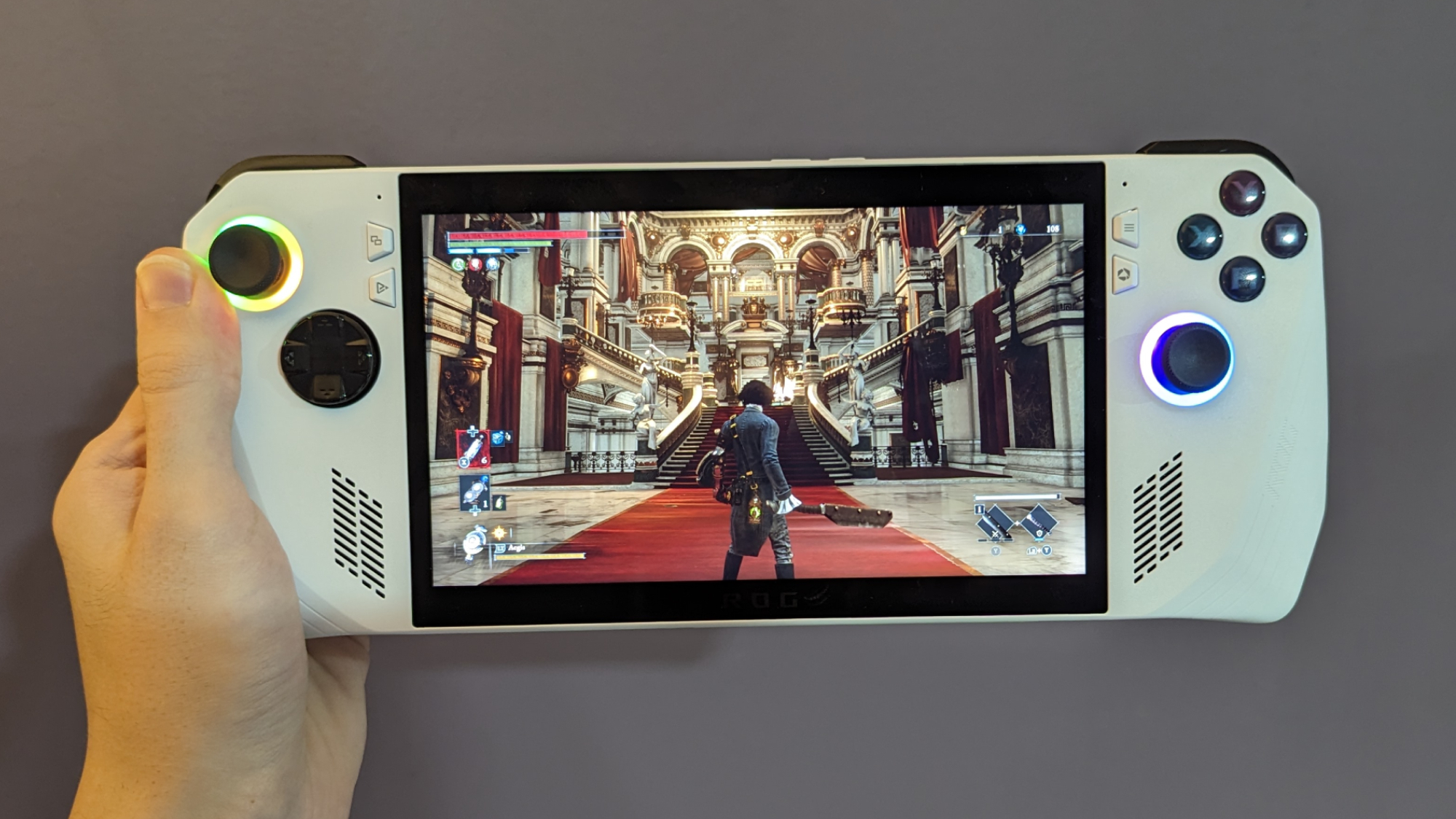
3. Asus ROG Ally
Specifications
Reasons to buy
Reasons to avoid
While the Asus ROG Ally isn't our first recommendation to the average user looking to get into the best handheld gaming devices, it is my personal favorite. Using Windows 11 as its operating system, this is effectively a Nintendo Switch that has all of the advantages of PC. I've never been a huge fan of gaming laptops due to their unwieldiness, and it's no secret that desktop PCs require a massive setup and are expensive.
I've probably used the Asus ROG Ally for hundreds of hours now, and while I would describe it as comfortable, it's not perfect. My wrist gets numb after sitting in bed for a couple of hours straight, holding it up as I game in helplessly addicted fashion. Otherwise, wrapping my palm around it feels like a dream—its curved left and right bottom edges come close to the ease of gaming on a controller.
The Asus ROG Ally lets me play many of the Steam and Xbox Game Pass titles I've always wanted to play, but never could quite get into while sitting at a desk. Instead, from the comfort of my bed, I've been able to complete Celeste, Signalis, Limbo, Inside, Eastward, Cocoon, Gris, Little Nightmares II and far more ever since I've started using it. Frankly, I'm addicted to this thing.
There are two models of the Ally available, with the least expensive priced at $599 and built with an AMD Ryzen Z1 processor, 16GB of RAM, 512GB of SSD storage, and a 7-inch 1,920 x 1,080-pixel panel with 120Hz refresh rate. We wouldn't recommend this model unless you exclusively plan to play indie titles or emulate older games and nothing else. Otherwise, the $699 AMD Ryzen Z1 Extreme model is our preferred option, as it is surprisingly powerful for something so small thanks to its Extreme processor
See our full Asus ROG Ally review.
Best 2K resolution
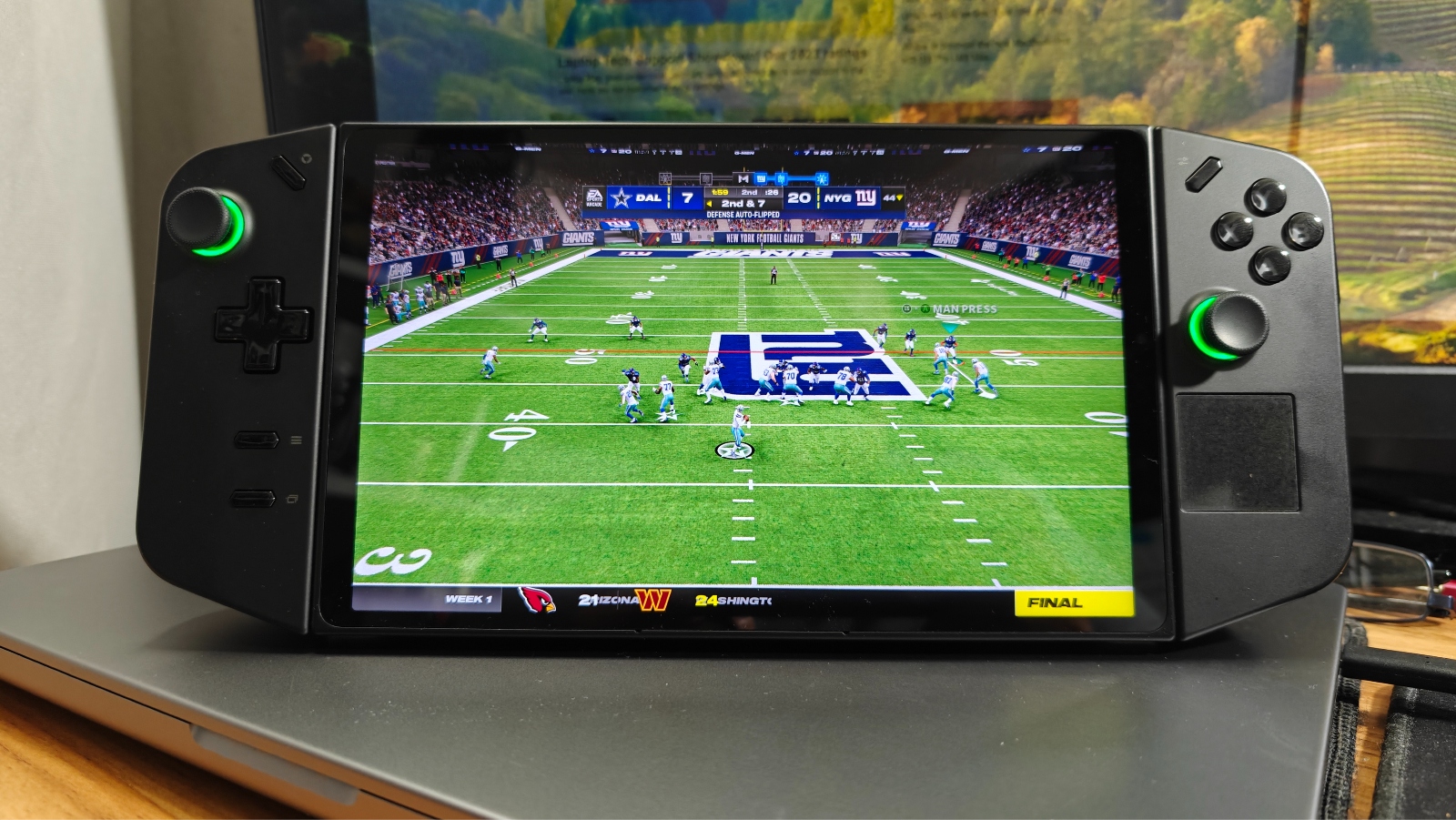
4. Lenovo Legion Go
Our expert review:
Specifications
Reasons to buy
Reasons to avoid
The Lenovo Legion Go is one of the latest additions to the handheld Windows PC lineup, and its specs had us shaking in our boots. With a 8.8-inch, 2,560 x 1,600-pixel IPS panel and detachable controllers, this has a new class of features that even the Asus ROG Ally doesn't quite have.
Alongside its already mentioned display, it's built with an AMD Ryzen Z1 Extreme processor, 16GB of RAM, and 512GB/1TB SSD for anywhere between $699 to $749. This makes its starting price the most expensive here by far in this list, but its $699 model is identical in cost to the recommended version of the Asus ROG Ally. While the Lenovo Legion Go is the heaviest on this list (1.88 pounds), Mark Anthony Ramirez claimed its ergonomics were excellent after his first impressions with it.
You're probably wondering: What am I losing by purchasing the Lenovo Legion Go over the Ally if they're the same price? Well, the Ally comes with a completely different controller layout, alongside lacking the beloved Armoury Crate app that makes exploring Windows 11 on handheld so much easier. Beyond just that, Asus is directly backed by Xbox Game Pass, making it the ideal device to use with that. Otherwise, the Lenovo Legion Go is a great pick for someone needing something larger, bigger, and higher resolution.
See our full Lenovo Legion Go review.
My experience with handheld gaming
I've been surrounded by games since childhood, and although the majority of my experience is with consoles, I spent a lot of time on handheld devices. Whether it was the Gameboy Advance, PlayStation Portable, Nintendo DS, Nintendo 3DS, or PlayStation Vita, being immersed into my favorite artform from the palm of my hands was wonderful. Just a few years ago, I would take NYC trains to and from Brooklyn College, pouring as much time in my Vita as possible, jumping between random games I received for free on PlayStation Plus.
I loved the Vita, but a lot of its games were bad, as the limited library made it easy to run out of things to do. When the Nintendo Switch launched in 2017, a similar passion began but was snuffed out by one issue: Starting a games library from scratch was unrealistic. I already own hundreds of games on PlayStation, alongside over a thousand titles on Steam, so having to re-purchase stuff I have on other hardware never quite sold me on it.
But then the Steam Deck launched. The 1,000+ games I owned could finally be enjoyed on handheld, but I resisted investing in one for the longest time. And I'm glad I did, because the release of the Asus ROG Ally changed everything: A once waning flame of intermittent intrigue burst into fiery adoration. I can play anything I own on Windows here, even emulating older games, using Xbox Game Pass, and connecting PlayStation Remote Play to enjoy my PS4/PS5 titles from the comfort of my bed.
I realized handheld gaming is the future, and while I won't play everything on these systems, half of the titles I've beaten this year were done so on my Asus ROG Ally—and I only got it at the end of August. I firmly believe these devices are the most exciting technological advancement the gaming industry has seen in many years, and I want nothing more than to share that excitement.
WHY TRUST LAPTOP MAG
We put hardware through extensive benchmark testing — both synthetic and real-world — before they end up in the hands of our reviewers. We evaluate each aspect, including its performance, battery life, display, speakers and heat management.
In our benchmark testing, we use a Klein K10 colorimeter to detect the brightness and sRGB color gamut of the handheld's display. For performance testing, we run it through a gauntlet of benchmarks, including Geekbench 5 and 6 and 3DMark professional graphics tests. Not every handheld can runs these applications, but we perform the tests on those that do.
To determine real-world performance, we task the device to convert a 4K video to 1080p resolution and to duplicate a 4.97GB multimedia file. We test them through an entire library of games at high settings to see how their discrete GPUs keep up.
We also run heat tests by playing a 15-minute full-screen video and measuring temperatures in different areas. Last but not least, our battery test consists of continuous web surfing over Wi-Fi at 150 nits of brightness. These tests are complemented with extensive hands-on testing from our reviewers.
Stay in the know with Laptop Mag
Get our in-depth reviews, helpful tips, great deals, and the biggest news stories delivered to your inbox.

Self-described art critic and unabashedly pretentious, Claire finds joy in impassioned ramblings about her closeness to video games. She has a bachelor’s degree in Journalism & Media Studies from Brooklyn College and five years of experience in entertainment journalism. Claire is a stalwart defender of the importance found in subjectivity and spends most days overwhelmed with excitement for the past, present and future of gaming. When she isn't writing or playing Dark Souls, she can be found eating chicken fettuccine alfredo and watching anime.
